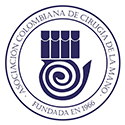Allinside Anatomic Arthroscopic (3A) Reconstruction of Irreparable TFCC Tear

In recent years, new arthroscopic techniques have been introduced to address the irreparable tears of the triangular fibrocartilage complex (TFCC) (Palmer type 1B, Atzei class 4) by replicating the standard Adams–Berger procedure. These techniques, however, show the same limitations of the open procedure in relation to the anatomically defective location of the radial origins of the radioulnar ligaments (RUL) and the risk of neurovascular and/or tendon injury.
Arthroscopic Assisted Treatment of Combined Trapezium and Bennett Fracture-Dislocation

The first carpo-metacarpal joint (CMC-1j) is essential for the movement and function of the thumb. Daily activities that involve grasping or holding can be greatly affected by an injury to this joint.
Wrist arthroscopy: indications, portal anatomy and therapeutic advances

Wrist arthroscopy has revolutionized the management of wrist pathology in recent years. This article aims to provide the reader with an overview of the procedure, its indications, set-up, and its applications, both diagnostic and therapeutic. Good knowledge of anatomy is a prerequisite to performing safe arthroscopic surgery and thus decrease iatrogenic complications.
(Dry) Arthroscopic Partial Wrist Arthrodesis: Tips and Tricks

One of the options for performing a partial wrist arthrodesis is the arthroscopic technique. As a first advantage arthroscopy allows us to directly assess the state of the articular surface of the carpal bones and define the best surgical option during the salvage operation.
Modified Technique for Basilar Thumb Osteoarthritis

The arthroplasty described by Weilby is a reliable procedure for the treatment of stage 2 and 3 basal thumb osteoarthritis. Although the technique provides good pain relief, optimal thumb mobility, and acceptable levels of grip and pinch strength in most cases, it is common to see the thumb collapsing because the interposed knot has disassembled.
We are IntechOpen, the world’s leading publisher of Open Access books Built by scientists, for scientists

Autologous fat injection into osteoarthritic joints (liparthroplasty) has shown high potential in reducing pain and delaying the need for surgical intervention. The liparthro- plasty is an alternative and minimally invasive treatment approach for finger and thumb carpometacarpal joint osteoarthritis with only a few studies available.








